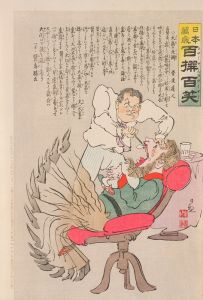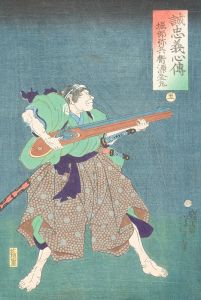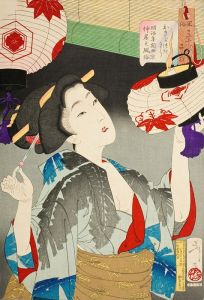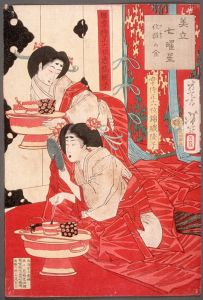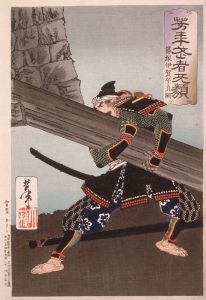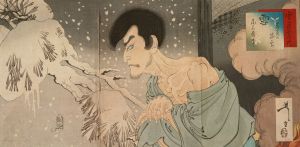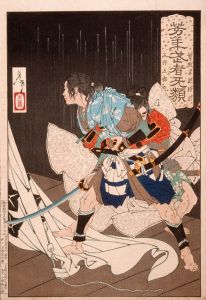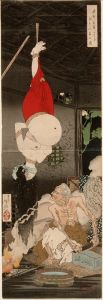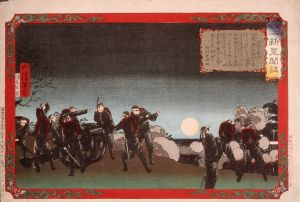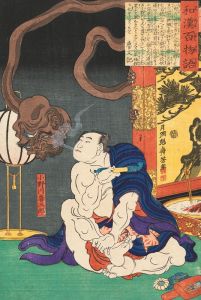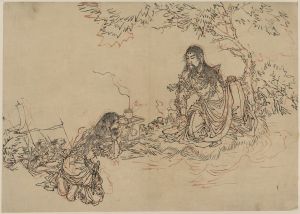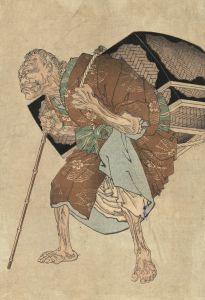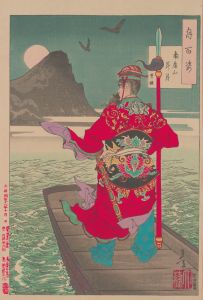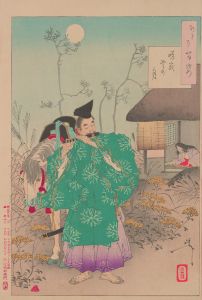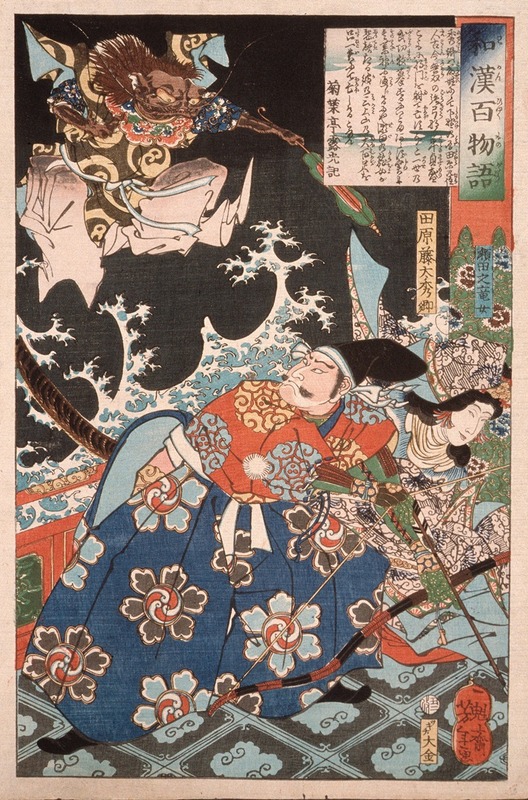
Tawara Tōda Hidesato Protecting the Dragon Woman of Seta from the Giant Millipede
A hand-painted replica of Tsukioka Yoshitoshi’s masterpiece Tawara Tōda Hidesato Protecting the Dragon Woman of Seta from the Giant Millipede, meticulously crafted by professional artists to capture the true essence of the original. Each piece is created with museum-quality canvas and rare mineral pigments, carefully painted by experienced artists with delicate brushstrokes and rich, layered colors to perfectly recreate the texture of the original artwork. Unlike machine-printed reproductions, this hand-painted version brings the painting to life, infused with the artist’s emotions and skill in every stroke. Whether for personal collection or home decoration, it instantly elevates the artistic atmosphere of any space.
"Tawara Tōda Hidesato Protecting the Dragon Woman of Seta from the Giant Millipede" is a woodblock print by the renowned Japanese artist Tsukioka Yoshitoshi. This artwork is part of Yoshitoshi's series "Tsuki Hyakushi" (One Hundred Aspects of the Moon), which was published between 1885 and 1892. Yoshitoshi is celebrated for his innovative approach to traditional ukiyo-e art, and his works often explore themes from Japanese folklore, history, and mythology.
The print depicts a legendary episode from the life of the historical figure Fujiwara no Hidesato, also known as Tawara Tōda. Hidesato was a 10th-century samurai who is best known for his legendary exploits, which have been romanticized in Japanese folklore. One of the most famous tales involves his encounter with a giant centipede, or millipede, at Lake Biwa.
According to the legend, Hidesato was traveling across the Seta-no-Karahashi Bridge over Lake Biwa when he encountered a beautiful woman who was, in fact, a dragon in disguise. The dragon woman sought Hidesato's help to rid the lake of a monstrous centipede that was terrorizing the area. Demonstrating his bravery and skill, Hidesato accepted the challenge. He used his bow and arrows to defeat the giant centipede, shooting it in its vulnerable eyes, which ultimately saved the dragon woman and the local inhabitants from the creature's menace.
Yoshitoshi's print captures the dramatic moment of Hidesato's confrontation with the giant millipede. The composition is dynamic, with Hidesato poised in a heroic stance, his bow drawn, ready to strike the fearsome creature. The artist's use of vivid colors and intricate details brings the legendary scene to life, highlighting both the tension of the encounter and the valor of the protagonist.
Yoshitoshi's "Tsuki Hyakushi" series, including this particular print, is notable for its exploration of the interplay between human emotions and supernatural elements, often set against the backdrop of the moon, which serves as a recurring motif throughout the series. The moon in this context symbolizes mystery, change, and the passage of time, adding a layer of depth to the narrative.
This print is a testament to Yoshitoshi's mastery of the ukiyo-e technique and his ability to convey complex stories through visual art. His work not only preserves traditional Japanese tales but also reflects the cultural and artistic transitions of the Meiji era, during which Japan was opening up to Western influences while striving to maintain its cultural heritage.
In summary, "Tawara Tōda Hidesato Protecting the Dragon Woman of Seta from the Giant Millipede" is a significant piece within Yoshitoshi's oeuvre, illustrating a legendary tale with artistic finesse and contributing to the enduring legacy of Japanese folklore in visual art.





